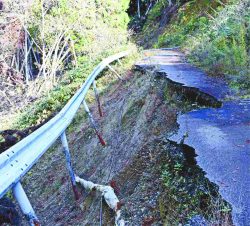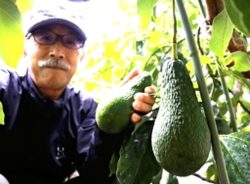
Chickens culled because of avian flu concerns were buried in municipal land such as this plot in Hyuga, Miyazaki Prefecture, seen on May 25.
20:00 JST, July 18, 2023
Of the 26 prefectures where avian flu had broken out, 12 had to change their plans to bury culled birds, according to a Yomiuri Shimbun survey conducted from May through June.
One prefectural government cited concerns about the environmental impact on groundwater at the initially planned burial site. In another case, the size of the site turned out to be inadequate.
In some cases, the initial plans were found to be in violation of the law as there were private homes or rivers nearby, revealing insufficient verification and guidance on the governmental side. There was also a case that became a two-month process until the carcasses were finally incinerated.
In Kagoshima Prefecture, a pond near a site used for burial became muddy and gave off a stench, forcing officials to decide to move the carcasses to another burial spot.
Overall, there were 16 such cases covering 3.25 million birds culled because of concerns over highly pathogenic avian flu. Besides Kagoshima, the other prefectures were Chiba, Fukuoka, Hokkaido, Ibaraki, Kagawa, Miyagi, Miyazaki, Niigata, Okayama, Saitama and Wakayama.
Under the Prevention of Infectious Disease in Livestock Law, livestock owners must incinerate or bury carcasses of culled animals promptly. The operators are also required to secure land and facilities for incineration or burial in advance and make reports to prefectural governments each year.
More than 95% of poultry farms and facilities, including those where avian flu had broken out since October last year, had reported that they had secured such land and facilities, according to sources including the Agriculture, Forestry and Fisheries Ministry.
Between that October and April, avian flu outbreaks occurred at 84 poultry farms and facilities in 26 prefectures. A total of 17.71 million chickens and other birds were culled. The number of outbreaks and culled birds marked record highs.
Handling of culled livestock has proved to be difficult. When foot-and-mouth disease broke out in Miyazaki Prefecture in 2010, the epidemic spread because of difficulties in finding burial sites for cattle and other large animals. Due to the cost, burial is more common than incineration.
In light of such problems, the farm ministry introduced a system this fiscal year to subsidize half the costs if livestock farmers and prefectural governments conduct prior examination of planned burial sites, such as through exploratory digging. As delays in disposing of culled birds involves the risk of spreading avian flu, the ministry is set to boost measures to prevent this by securing burial sites.
Avian influenza is caused by infection with avian influenza Type A viruses. These viruses are classified as highly pathogenic if there is a high degree of virulence and the possibility of mutation. Migratory birds wintering in Japan can bring in the viruses, spreading infections to wild birds and domesticated chickens.
"Society" POPULAR ARTICLE
-

M4.9 Earthquake Hits Tokyo, Neighboring Prefectures
-

Israeli Tourists Refused Accommodation at Hotel in Japan’s Nagano Pref., Prompting Protest by Israeli Embassy and Probe by Prefecture
-

M7.5 Earthquake Hits Northern Japan; Tsunami Waves Observed in Hokkaido, Aomori and Iwate Prefectures
-

Tsukiji Market Urges Tourists to Avoid Visiting in Year-End
-

M5.7 Earthquake Hits Japan’s Kumamoto Pref., Measuring Upper 5 Intensity, No Tsunami Expected
JN ACCESS RANKING
-

Keidanren Chairman Yoshinobu Tsutsui Visits Kashiwazaki-Kariwa Nuclear Power Plant; Inspects New Emergency Safety System
-

Imports of Rare Earths from China Facing Delays, May Be Caused by Deterioration of Japan-China Relations
-

Tokyo Economic Security Forum to Hold Inaugural Meeting Amid Tense Global Environment
-

University of Tokyo Professor Discusses Japanese Economic Security in Interview Ahead of Forum
-

Japan Pulls out of Vietnam Nuclear Project, Complicating Hanoi’s Power Plans
























